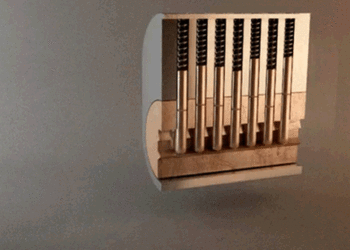An interesting intersection of the analog and the digital can be found in the video below. Computers are designed to be predictable, so generating random numbers is not an easy task, but a necessary one for the unique cryptographic keys used for encryption. Cloudflare does this by photographing a wall of lava lamps, and the unique differences in “lava” position (not to mention lighting and other photographic factors) are used to generate a unique random number. Who knew encryption could be so mesmerizing?
Discussion
2 Thoughts on "Lava Lamps and Internet Security"
Any technology that uses lava lamps gets my vote!
Thank you, David, for this enlightening start to my day!


